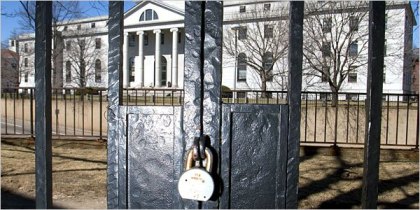When I was a student at an established, well-resourced public school in an upper-middle class neighborhood, I knew that there were college opportunities out there for me. As the son of two college graduates, I had role models that expected me to push myself past high school graduation and past my local community college. As a generally sufficient student, I was able to get the grades to meet their expectations.
But most students in America do not have what I had, and it’s becoming a serious problem. A recent study by Christopher Avery and Caroline Hoxby (of Harvard and Stanford, respectively) reveals a series of troubling trends in the college trajectories of high-achieving poor students.
The New York Times did a great write-up of their findings and I will not duplicate it, but in essence: poor students-even and especially those of very high achievement and test scores-do not apply to the same schools that similarly high achieving rich students do.
It’s easy to see why students coming from low-income homes, poverty, or homelessness might see some very practical barriers to entry into some of the country’s best schools: applications are time consuming and expensive (even with vouchers), tuition and students loans are intimidating (even with financial aid), and, perhaps most importantly, the possibility of college beyond local state schools is just foreign to many high school students growing up without examples of adults that traveled after high school for their education. See this great paragraph from the Times:
“A lot of low-income and middle-income students have the inclination to stay local, at known colleges, which is understandable when you think about it,” said George Moran, a guidance counselor at Central Magnet High School in Bridgeport, Conn. “They didn’t have any other examples, any models — who’s ever heard of Bowdoin College?”
And despite trying to engender a public image of reaching far and wide to constitute their student bodies, colleges do not seem to look farther than major urban centers to attract a suitable amount of lower-income students. Others, in rural areas or smaller cities, are left on their own.
So, what to do? Colleges seem to be starting major outeach efforts for poor students beyond the reliably big cities, but it’s going to take a lot of work to disrupt what Michael Gerson famously called “the soft bigotry of low expectations.” Maybe, in light of another post-graduate public service opportunity sweeping elite institutions, we should start something new.
How does “Guidance Counselors For America” sound?
Photo credit: nytimes.com
